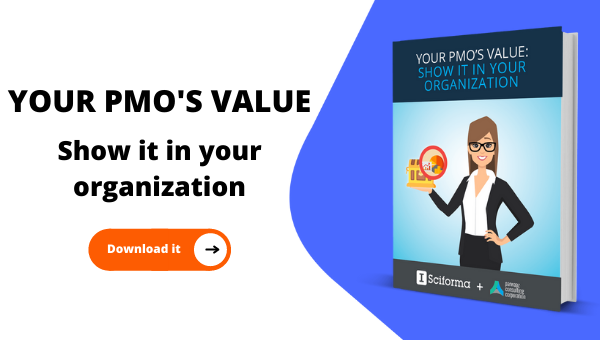Have you ever heard of an organization boasting a 100% project success rate? We haven’t. And we’ve been in the Project Portfolio Management space for a while (meaning, decades). However hard they try to bring their initiatives to fruition, organizations worldwide are still meeting roadblocks and issues that thwart or delay the realization of the benefits they expect from their investments in projects. Talented staff, inspiring leadership, state-of-the-art tool sets, time-tested processes and best practices can help reduce and mitigate risk to some extent. But unforeseen events always seem to find their way in and threaten to derail projects. How can PPM professionals cope with unpredictability and uncertainty when managing projects?
Why is Project Management Subject to Uncertainty?
Projects typically involve multiple, diverse stakeholders; they exist to capture market opportunities or to solve problems with external root causes. This means that the success of any project is dependent on a set of conditions to be met. In other words, projects are intrinsically exposed to an array of various risks, both internal and external: organizational risk, technology risk, market and regulatory risk, and more.
A key responsibility of project managers is to chart a course towards project completion and delivery by defining a schedule and timeline for the various tasks and activities. But the initial assumptions based on which the schedule was established might be flawed; the estimates might prove inaccurate; the situation may take an unexpected turn during the course of execution of the project.
How to Reduce Uncertainty in Project Management
While no project manager can really eliminate uncertainty altogether, it is possible to take some steps that should help reduce it. A first recommendation is to try and improve your visibility over your projects and organization. When selecting, initiating, and planning your projects, you should make sure to engage with all relevant stakeholders and end-users to gain in-depth understanding of the drivers and blockers you’re dealing with.
You should also be paying the same attention to the tools, machinery, and overall capabilities that you intend to leverage to complete the project: knowing beforehand that such and such a piece of equipment requires such and such specific conditions to function or is subject to such and such technical risk can go a long way towards avoiding unpleasant surprises.
Finally, it really helps to have a clear overview of the organization’s other in-progress projects and programs, since multiple projects usually share common resources. Consequently, an understanding of activity at the organization-level may help you to anticipate resource conflicts.
Once you have a solid grasp of your project and of its surroundings, you should try to list the risks that you have identified and consolidate them into a comprehensive register. Match each risk with both a probability and a severity score. Knowing and understanding the risks to your project will help you reduce the overall uncertainty. In turn, it will enable you to respond better and faster should the identified problems occur.
Why (and How) Project Managers Should Embrace Uncertainty
While a risk identification system and a contingency plan will help to reduce uncertainty significantly, you can never totally shield your projects from unpredictable events. This is why PPM professionals might as well take uncertainty in stride and learn to cope and live with it.
It would be delusional to consider a project plan and schedule as set in stone. The world changes by the minute. Organizations evolve, markets are in flux, and any delay in the chain of tasks required to complete a project might have unforeseen consequences. Customers or project owners may change their minds and edit the project requirements overnight.
Estimates and risk management plans are important, but they’re not everything. Change is going to happen whatever you do, so you’d as well be prepared to respond to the unexpected. Project managers and PMOs should embrace and cultivate adaptability. They should promote flexible methods, for example by adopting Agile project management frameworks. When managing a somewhat long and complex project, it may be a good idea to start by tackling the riskiest parts first. Finally, a key prerequisite to successfully coping with project-related uncertainty is great stakeholder communication. Project and product owners, executive leaders, and project team members should be kept updated of project progress and status — even when things don’t turn out the way they were supposed to. Fostering a culture of business agility organization-wide should help everyone involved understand that uncertainty is a fact of life and enable swifter, smarter response to unexpected events.
For more information about risk management and agility:
- Who Uses the Agile Methodology Today?
- Effectively Monitoring Project Risks
- What Are the Main Problems in Project Portfolio Management?








Benoît Boitard
Benoît has multiple professional experiences, working in particular as a digital strategy consultant, both in emerging start-ups and in large companies. These diverse experiences have imbued him with a global vision of project management in traditional and agile working environments.